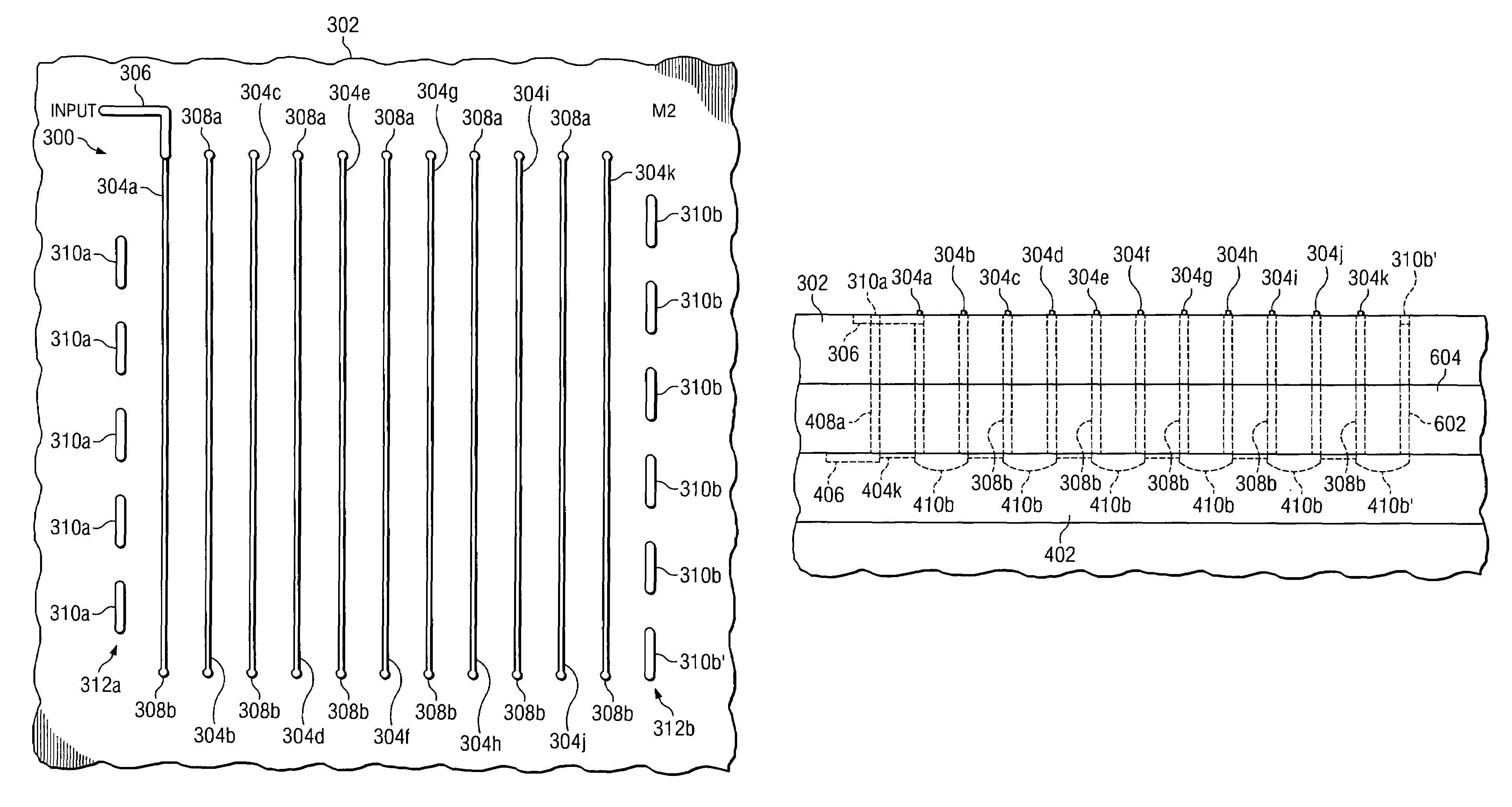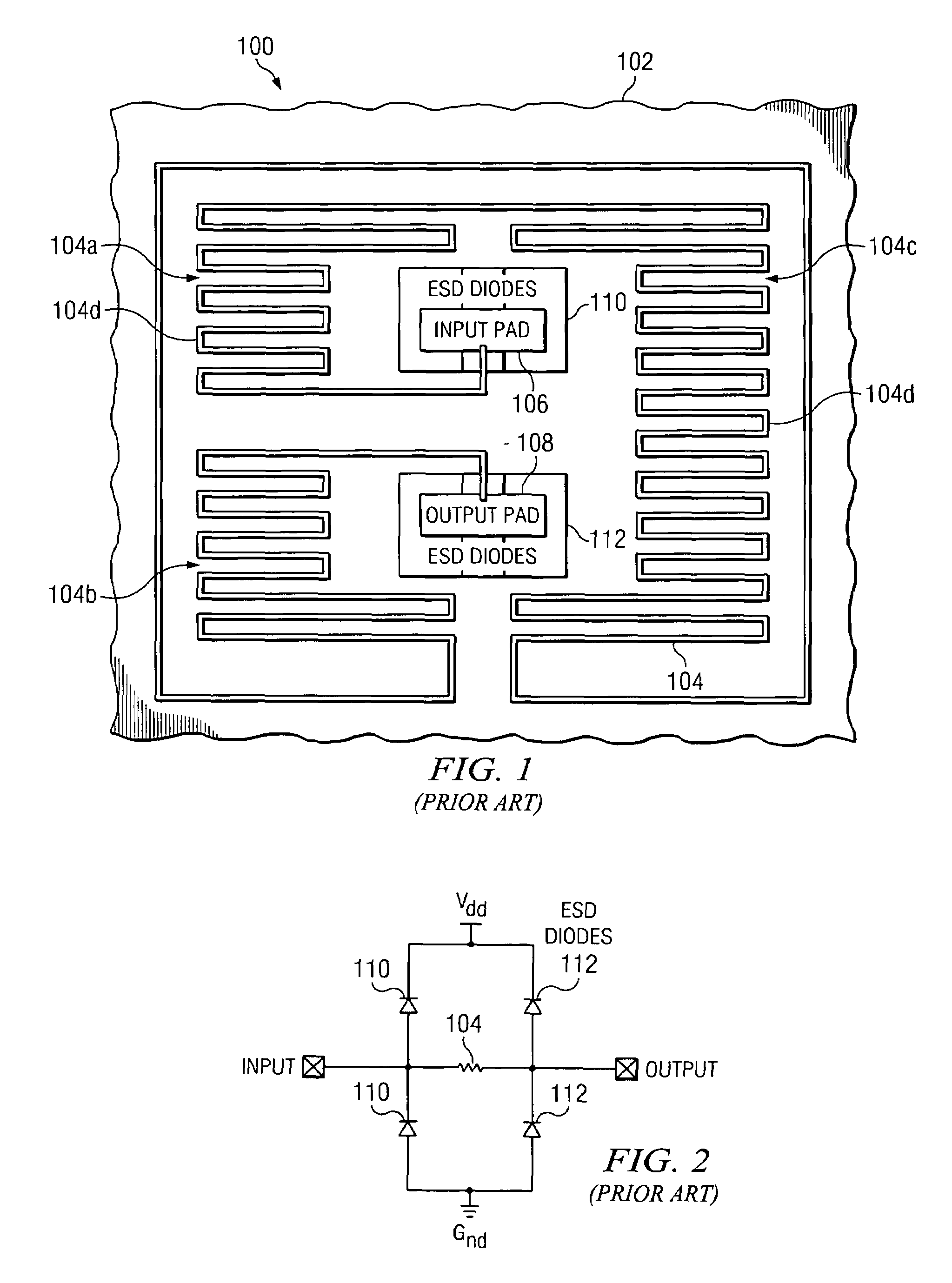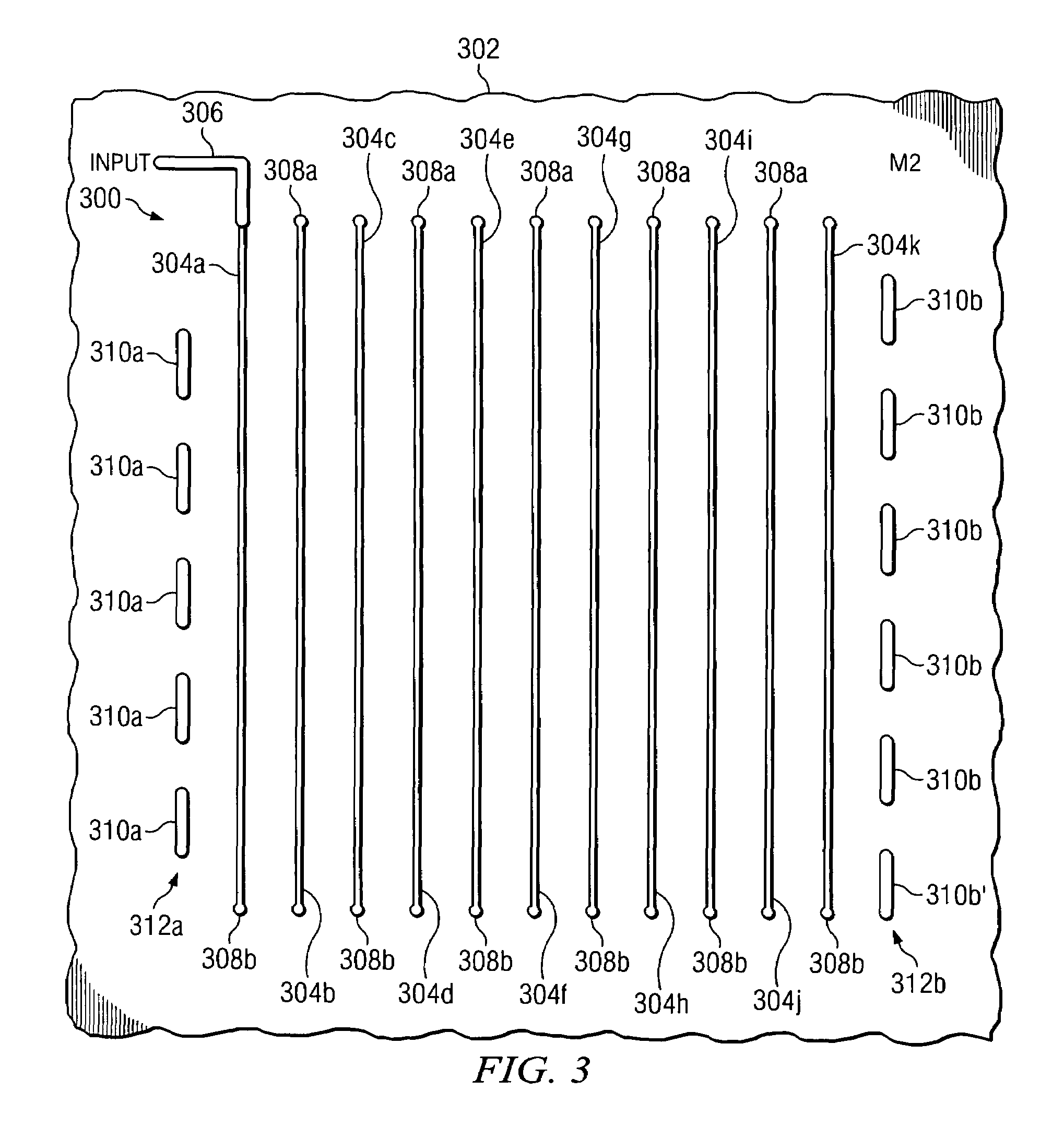Multi-layered thermal sensor for integrated circuits and other layered structures
a technology of integrated circuits and layers, applied in the direction of thermometer details, instruments, heat measurement, etc., can solve the problems of sensor not being able to be integral parts of the circuit being measured, sensor being more susceptible to variations in the wire fabrication process, sensor not being able to be placed at the particular location, etc., to achieve the effect of increasing the utility of the space in the i
- Summary
- Abstract
- Description
- Claims
- Application Information
AI Technical Summary
Benefits of technology
Problems solved by technology
Method used
Image
Examples
Embodiment Construction
[0021]Referring to FIG. 1, there is shown a prior art resistive thermal sensor of the type described above, formed on a metal layer 102 of an IC semiconductor that is not otherwise shown. Sensor 100 comprises a continuous wire or line 104 formed of conductive metal. Herein, the terms “wire”, “line” and “trace” are used interchangeably, to refer to a narrow conductive path formed on one of the metal layers of an IC.
[0022]As discussed above, wire 104 must be of substantial length in order to have a resistance that is high enough to be useful in determining temperature adjacent to sensor 100. Thus, in order to provide sufficient wire length, wire 104 is placed on layer 102 in a serpentine pattern, as shown by FIG. 1 and discussed above. The pattern comprises several larger loops 104a, 104b and 104c, wherein each of the larger wire loops comprises a number of smaller or tighter wire loops 104d. As stated above, sensor wire 104 must be narrow enough to have sufficient resistance over its...
PUM
| Property | Measurement | Unit |
|---|---|---|
| conductive | aaaaa | aaaaa |
| non-conductive | aaaaa | aaaaa |
| resistance | aaaaa | aaaaa |
Abstract
Description
Claims
Application Information
 Login to View More
Login to View More - R&D
- Intellectual Property
- Life Sciences
- Materials
- Tech Scout
- Unparalleled Data Quality
- Higher Quality Content
- 60% Fewer Hallucinations
Browse by: Latest US Patents, China's latest patents, Technical Efficacy Thesaurus, Application Domain, Technology Topic, Popular Technical Reports.
© 2025 PatSnap. All rights reserved.Legal|Privacy policy|Modern Slavery Act Transparency Statement|Sitemap|About US| Contact US: help@patsnap.com



